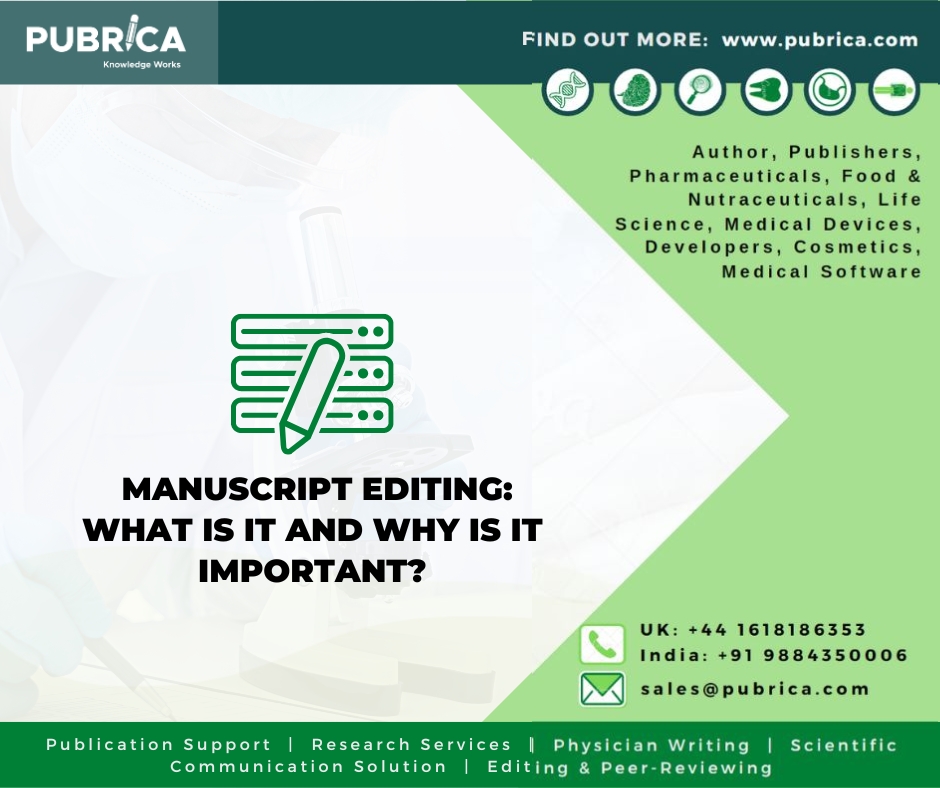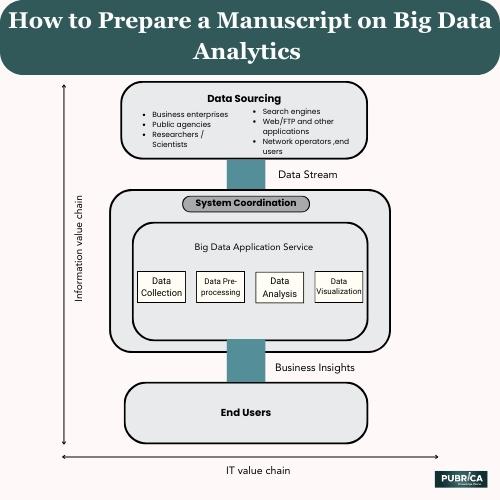
In Academic Journals, How Are Manuscripts Usually Peer-Reviewed?
July 6, 2023
Manuscript editing: What is it, and why is it important?
July 20, 2023Big Data Analytics refers to the process of examining large and complex datasets to uncover hidden patterns, correlations, and insights. It involves the use of advanced analytical techniques and tools to extract meaningful information from vast amounts of data. This blog offers a broad approach to manuscript preparation with Big Data Analytics and steps to assist you in the research paper preparation process.
Introduction
Big data analytics is significant because it allows businesses to use their data to uncover areas for improvement and optimization. Increasing efficiency leads to more intelligent operations, bigger earnings, and pleased consumers across all company sectors.
What is the role of big data analytics in research?
Big data allows market data analysis in research to apply more advanced analytical methodologies, like machine learning and artificial intelligence, to understand customer behaviour and preferences better.

Preparing a manuscript on Big Data Analytics requires careful attention to detail and adherence to standard scientific writing guidelines. Here’s a step-by-step guide to help you in the manuscript analysis preparation process:
- Title and Abstract:
- Begin with a brief and informative title that appropriately describes the content of your APA manuscript document format.
- Follow it with an abstract summarising your study’s key objectives, methods, results, and conclusions.
- Introduction:
- Please provide a clear and concise introduction to the topic, including the significance of Big Data Analytics and its relevance to the research data analyst field.
- Highlight the specific data analysis in your study’s qualitative research problem or research question.
- Provide a brief overview of existing literature and explain how your work contributes to the current knowledge.
- Methodology:
- Describe the data sources, data collection methods, and data preprocessing techniques used in your study.
- Explain the analytical techniques, algorithms, and statistical methods employed for secondary data analysis.
- Clearly state any assumptions made during the data analysis.
- Results:
- Present your findings in a logical and organized manner.
- Utilize visual aids such as charts, graphs, and tables to enhance data presentation.
- Provide detailed descriptions of the results, highlighting the key observations and trends.
- Ensure that your results are reproducible by including sufficient information on the analysis process.
- Discussion:
- Interpret the results and relate them to the health data research objectives and previous studies.
- Discuss any limitations or biases in your study and propose potential solutions.
- Address any unexpected or inconsistent results and offer possible explanations.
- Identify the implications of your findings and their significance for the field of Big Data Analytics.
- Conclusion:
- Summarize the main findings of your study and their implications.
- Highlight the contributions of your research paper and suggest future directions for further investigation.
- References:
- Cite all the relevant sources you have referenced throughout your manuscript.
- Use a consistent citation style (e.g., APA, MLA, or IEEE) and follow the target journal’s or conference’s formatting guidelines.
- Figures and Tables:
- Ensure all figures and tables are clear, well-labelled, and understandable.
- Include detailed captions that describe the content of each figure or table.
- Formatting and Style:
- Follow the specific formatting and style guidelines the target journal or conference provides.
- Use a consistent font, spacing, and margin size throughout the manuscript.
- Proofread your manuscript editing carefully to eliminate grammatical, spelling, or typographical errors.
- Review and Revision:
- Share your manuscript with colleagues or mentors for feedback and suggestions.
- Revise your manuscript based on the feedback received, addressing any concerns or comments raised.
- Repeat the review and revision process until you are satisfied with the final version.
Reviewing the guidelines and instructions provided by the target journal or conference before submitting your manuscript is essential. Adhering to their specific requirements will increase your chances of successful publication.
To know more about Manuscript Data analytics, check our study guide. How should a data-analysis write-up for a manuscript be formatted?
Future Scope of Big Data Analytics:
The future scope for a guide to manuscript preparation with Big Data Analytics lies in adapting to emerging technologies, addressing ethical and regulatory concerns, promoting collaboration and reproducibility, enhancing data visualization techniques, and catering to the interdisciplinary nature of big data applications.
Conclusion
The big data analytic framework is a general paradigm for big data systems that represent logical functional components and interfaces for interoperability. Its goal is to provide an open technology reference architecture for decision-makers, data architects, developers, scientists, and engineers to develop solutions for an interoperable big data ecosystem. This approach helps comprehend how big data solutions complement or distinguish from existing cognitive analytics and traditional data application systems in various environments, including loosely connected sectors and tightly integrated corporate systems.
- Check our manuscript data analysis sample work to know and learn more about “Achieving Change Through Diagnostic Analysis: Introduction“.
About Pubrica
Pubrica’s researchers and data science team use advanced machine learning (ML) techniques to analyze the data. Our comprehensive data analytics and ML services include text mining and natural language processing, medical imaging analyses, semantic annotation, deep learning application, predictive modelling for personalized treatment, algorithm flow charts or rule-making medical recommender systems, and visual analytics for healthcare.
References
- Khan, Murad, Bilal Jan, and Haleem Farman. Deep learning: convergence to big data analytics. Singapore: Springer, 2019.
- Raghupathi, Wullianallur, and Viju Raghupathi. “Big data analytics in healthcare: promise and potential.” Health information science and systems 2 (2014): 1-10.



